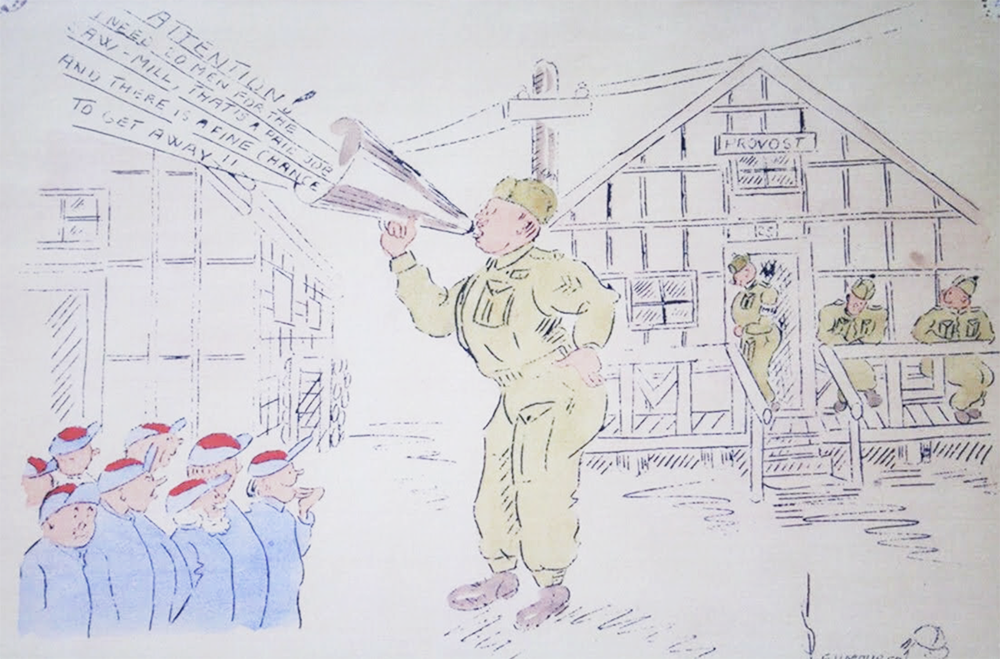The Beaverbrook Art Gallery’s upcoming exhibition Escape: Art from New Brunswick’s Internment Camp highlights the role artistic creativity played in the lives of those interned at B70, the Maritimes’ only Second World War internment camp.

Matt Carter
A new exhibition opening at the Beaverbrook Art Gallery will display artwork created by prisoners-of-war interned at Camp B70 during the Second World War. Located about 30 km east of Fredericton in the community of Ripples, the camp was first a home to German and Austrian Jews who fled the Nazis, and later to captured members of the German and Italian Merchant Marines as well as Canadians who spoke out about the war.
After it was closed in 1945, Camp B70 became a memory to those who lived and worked between its fences and a dark spot on Canada’s war heritage. Today, the last remaining structure on the original site is the concrete base of the camp’s water tower which stands near Route 10.
Escape: Art from New Brunswick’s Internment Camp was curated by Dr. Todd Caissie, who grew up on both sides of the Ripples’ famous landmark. Born in Minto and a graduate of Fredericton High School, Caissie, now based in New Jersey, is the Director of New Brunswick Internment Camp Museum in Minto.
“There are around 35 works in this exhibition,” said Caissie. “I selected these from almost 700 objects from the Internment Camp Museum’s collection in Minto, along with one item from the NB Archives. I wanted to highlight the incredible talent and diversity of art made in the camp while simultaneously focusing attention on this aspect of Canada’s difficult heritage.”
Featured works in the exhibition include drawn, painted and crafted items, each serving to highlight the various forms of metaphorical escape employed by those who called Camp B70 home between 1940 and 1945.
“Curating this show helped put this internment camp’s prisoner art into the larger discourse on art and incarnation,” said Caissie. “Especially the psychological and emotional aspects of making art behind bars.”
Caissie said his appreciation for the plight of prisoners and the many Jewish refugees who fled Europe to escape Nazi oppression has only increased through the process of compiling this exhibition, noting the inspiration he has drawn from the “incredible quality of the art produced from paintings to concerts to woodworking, usually with meager and recycled materials and tools.”
“However, my sadness in realizing the horrible way the Canadian government treated many innocent Canadian citizens during the Second World War is also more acute. It’s difficult but important to reconcile being a proud Canadian with acknowledging it’s not perfect and important lessons can be learned from examining our negative heritage.”
Escape: Art from New Brunswick’s Internment Camp will open on display from October 14 to December 31. A public opening celebration will take place Saturday October 28 from 4-6 p.m. Admission by donation.




